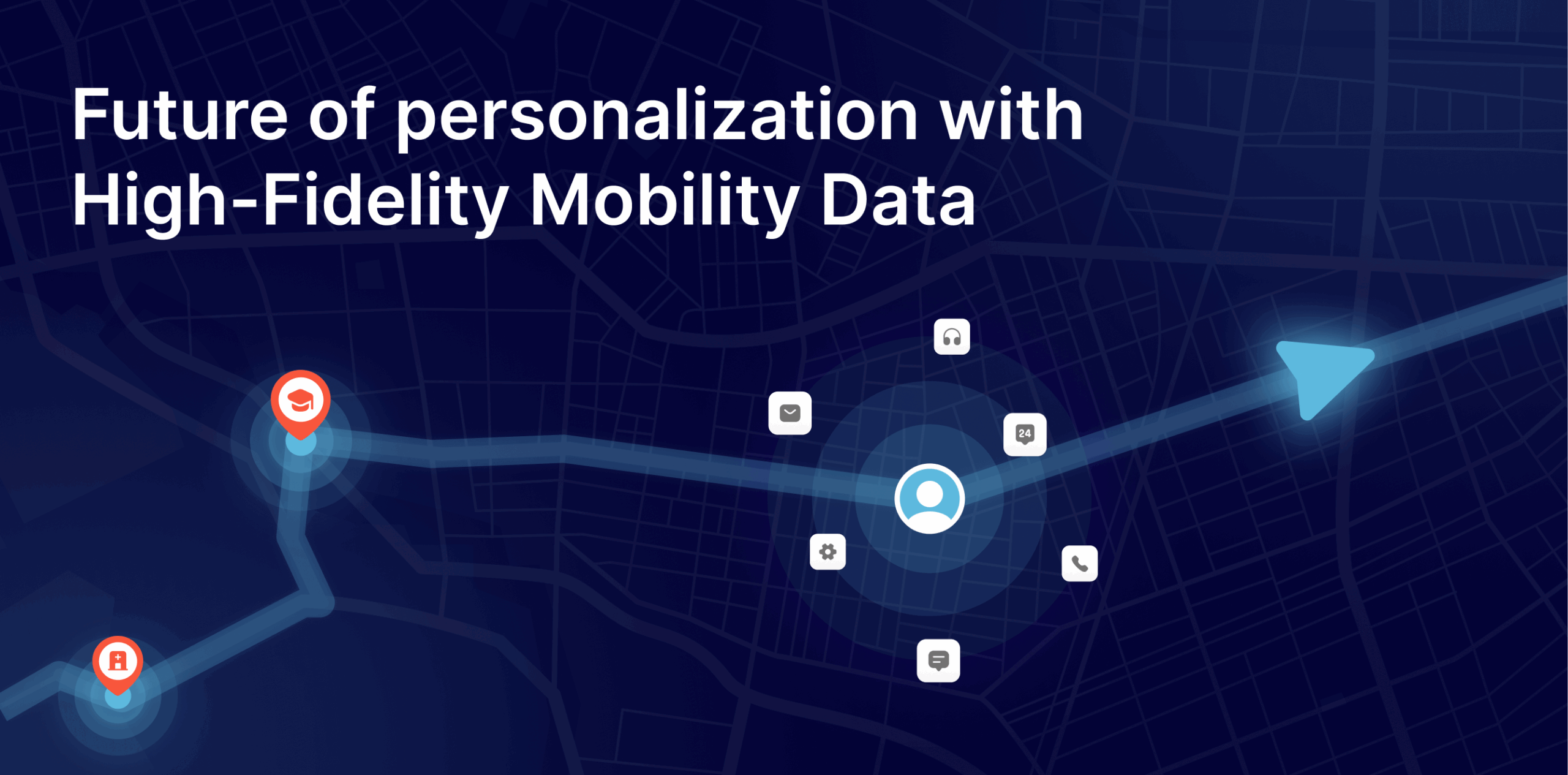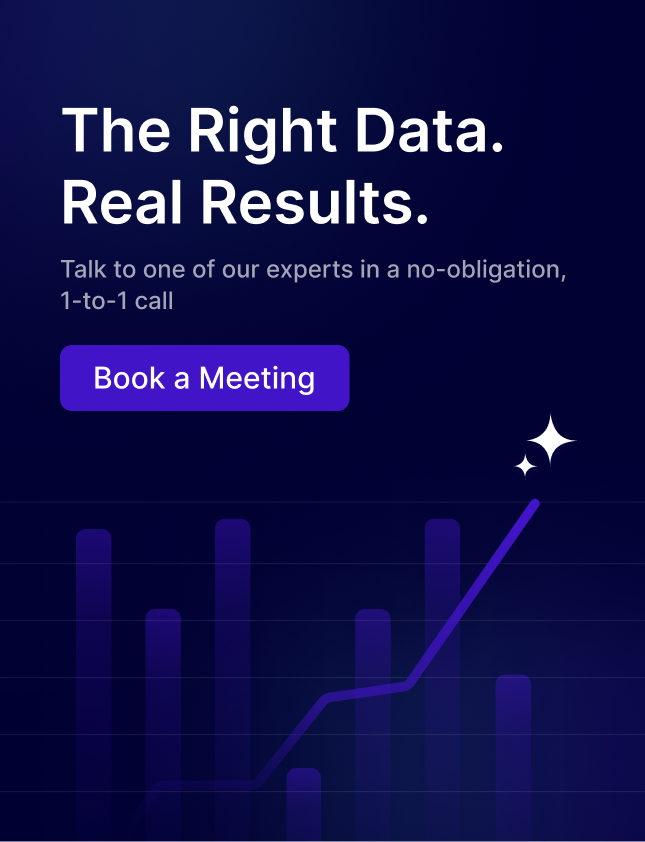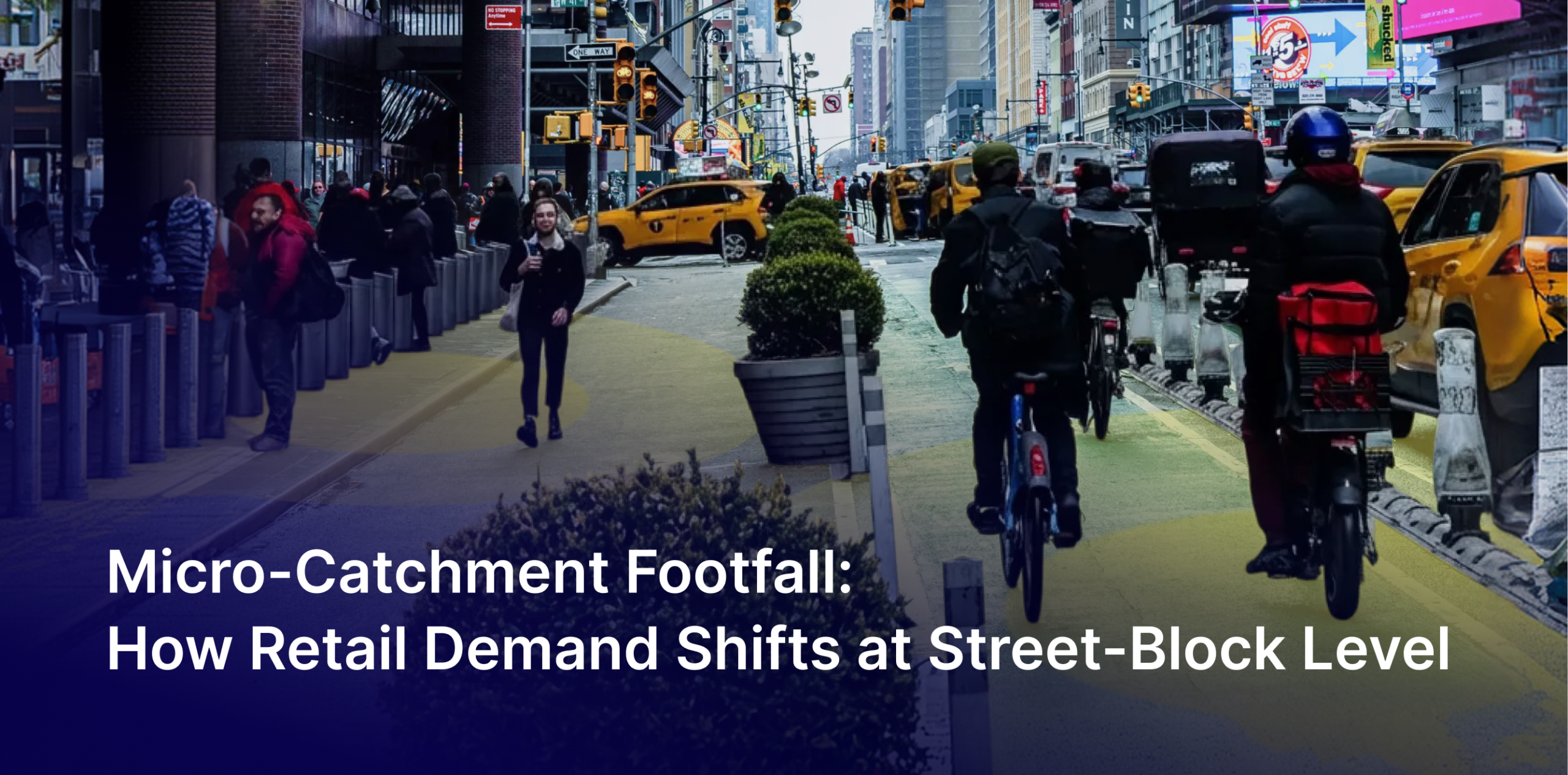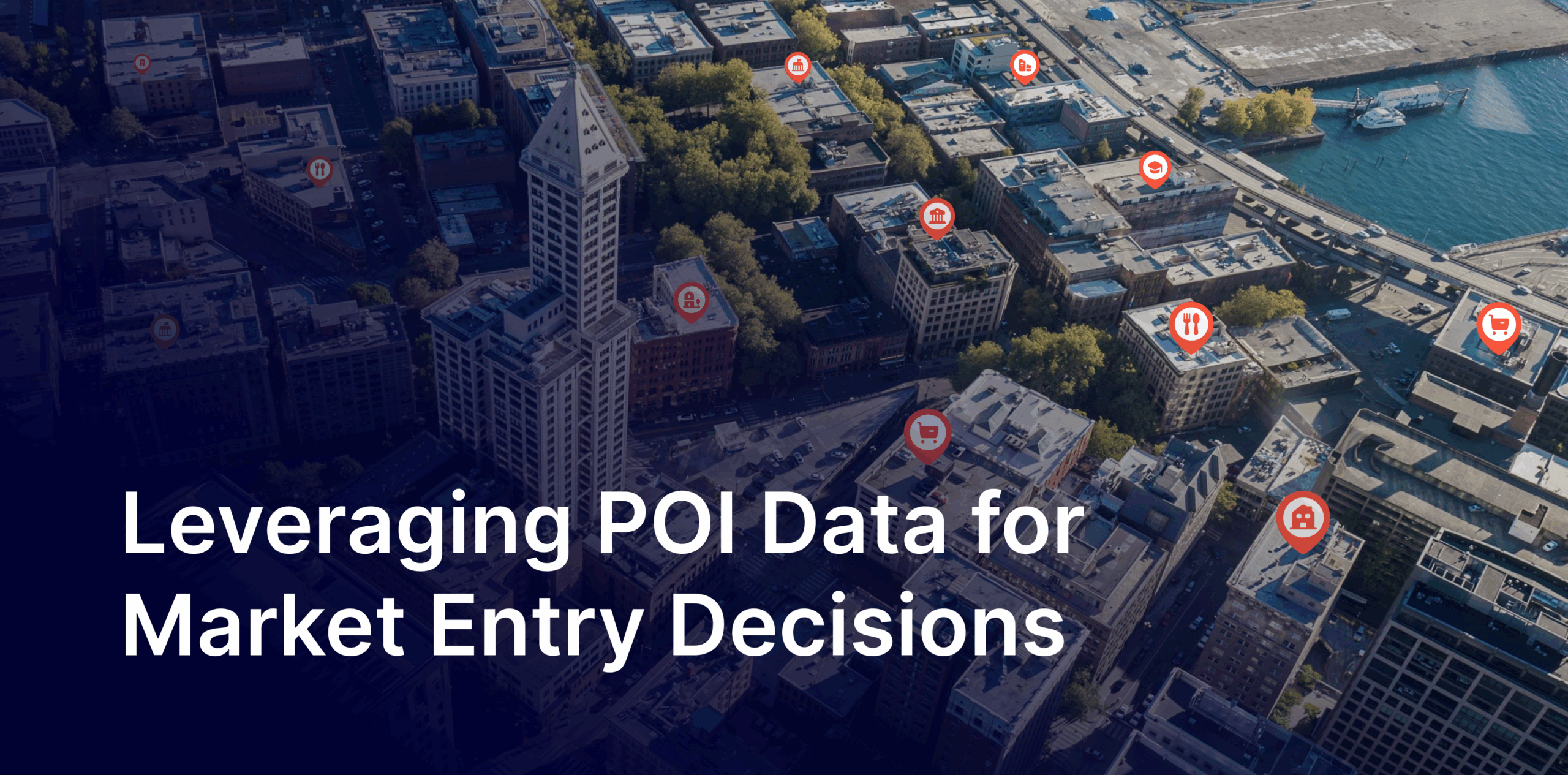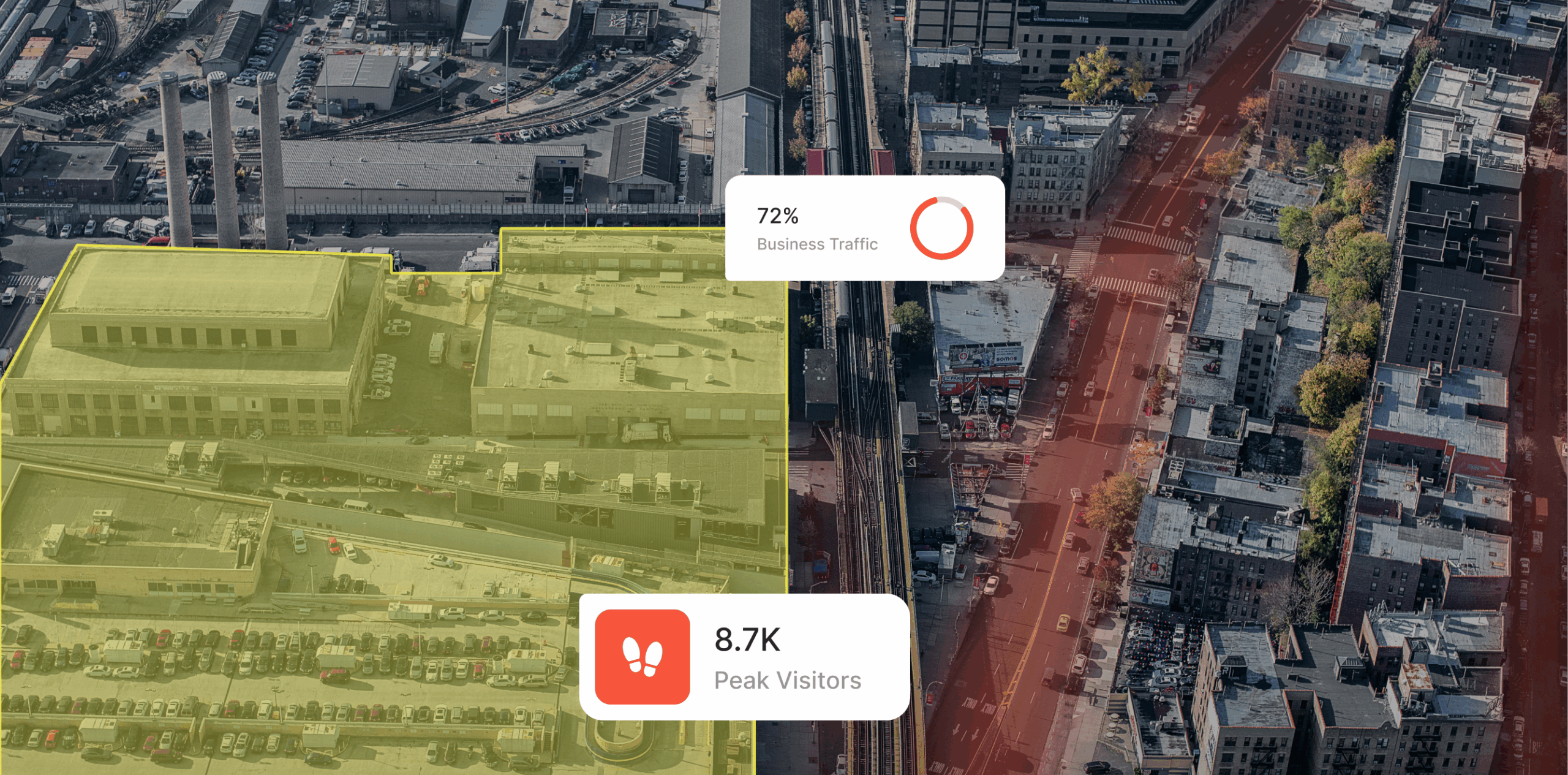Remember the last time a brand sent you a perfectly timed offer, right when you needed it? That wasn’t a lucky guess—it resulted from smarter marketing powered by high-fidelity mobility data.
Today’s most innovative marketers are discovering that understanding how people move through the real world unlocks a new level of personalization that goes beyond digital footprints and taps into real-world intent.
Why personalized marketing matters more than ever
We live in an era of constant exposure. Every day, the average person is bombarded with thousands of ads, but only a handful catch our attention. What sets those apart? Relevance.
When a message speaks directly to our current context or needs, we take notice. That’s why personalization has become the heart of modern marketing.
But now, with access to detailed real-world behavioral data, marketers are going beyond clicks and search history to understand what people are doing in the physical world and tailoring outreach accordingly.
This shift transforms marketing from feeling like an interruption to becoming a timely, relevant assist.
What is High-Fidelity Mobility Data, and why does it matter?
High-fidelity mobility data is a far more advanced form of location intelligence. Rather than just capturing GPS coordinates, it delivers rich insights into where people go, how often they go there, how long they stay, the paths they take, and the context around these movements.
These patterns reveal personal habits that digital signals alone often miss. Think about your day—where you shop, work, relax, or grab coffee. These real-world behaviors say a lot about your interests, preferences, and routines.
For marketers, this data fills in crucial gaps. It more accurately connects online research to offline purchases, surfaces lifestyle preferences based on movement, identifies where and when people are most receptive to messaging, and paints a full picture of customer journeys that span digital and physical touchpoints.
In short, it gives businesses the tools to meet people where they are and when and how they’re most likely to engage.
How marketers capture these Insights
The most accurate mobility insights come from a combination of sophisticated data sources. Mobile devices generate anonymized signals when users opt into location services, which, when processed through advanced algorithms, provide detailed movement maps.
Layered on top of this are building-level insights from store visit data, offering a clear view of foot traffic, dwell times, and in-store paths.
These inputs are merged and analyzed with AI to identify meaningful trends, without tracking individuals. Reputable providers ensure data is aggregated and anonymized to protect privacy while delivering actionable intelligence.
How movement patterns translate into more relevant marketing
Understanding how people move unlocks new ways to engage them meaningfully.
A high-end kitchenware brand, for example, can identify individuals who regularly visit farmers’ markets, wine shops, and cooking schools. These aren’t just casual browsers—they’re culinary enthusiasts. With high-fidelity mobility data, the brand can segment this audience based on visit frequency and behavior, reaching people who may never have landed on their website but share traits with their most loyal customers.
Timing also becomes sharper. A quick-service restaurant can change its approach based on whether customers rush through their weekday lunch or enjoy a weekend afternoon. During the workweek, the messaging might highlight speed and convenience. It could shift to showcase family meal deals or seasonal menu items on weekends.
Understanding complete customer journeys is another significant benefit. A furniture retailer may realize that shoppers tend to do online research first, then visit multiple stores in one trip before buying. With this insight, they could create a “save to shopping list” feature that store associates can access to guide customers directly to the products they’ve viewed online, streamlining the path from interest to purchase.
Even something as specific as sending an offer at just the right moment becomes more accurate. A coffee shop might learn that some customers visit regularly on weekday mornings but choose competitors on weekends. Mobility data could reveal that they make their café decision around 9 AM on Saturdays, prompting the brand to send them an exclusive offer at 8:45 AM, boosting the odds of winning that visit.
What this looks like in action
Consider how real businesses are using this data to gain a competitive edge.
One urban fashion retailer wanted to expand its audience beyond existing brand fans. Instead of targeting broad demographics, they analyzed where their ideal customers spent time—specific fitness studios, indie music venues, and trendy brunch spots. Their creative campaign reflected these lifestyles, and engagement skyrocketed by focusing on particular locations.
Despite substantial lunchtime traffic, a restaurant chain noticed a dip in evening footfall. High-fidelity data showed that many lunch customers worked near their locations but commuted home to entirely different areas.
Having that insight, the brand shifted strategy, targeting dinner promotions only to those who lived near specific outlets and delivering those offers during their evening commute. The result was a meaningful lift in evening visits and more efficient use of ad spend.
Meanwhile, an auto dealership group discovered that potential buyers who researched online often visited rival showrooms in person. Detailed mobility analysis revealed exactly which competitors were drawing their traffic, and when. This allowed the dealerships to improve in-person experiences and promote those features specifically on the highest competition days, resulting in a boost in showroom visits from digital leads.
Privacy still comes first
With all this data, privacy must remain a top priority. The best marketers understand this isn’t about tracking individuals—it’s about identifying patterns that help improve experiences without compromising trust.
That starts with using anonymized, aggregated data that meets rigorous privacy standards. It also means being transparent about how location data is used and what value it provides to customers. People are more likely to opt in when they see the benefits, whether it’s faster service, more relevant offers, or avoiding irrelevant noise.
Giving users control is just as important. Brands should make it easy for customers to manage their location permissions and preferences anytime.
Done responsibly, this approach creates a better exchange: customers share data, and in return, they receive genuinely helpful, relevant interactions.
But where to begin?
Businesses looking to embrace high-fidelity mobility data should start with clear goals. What are the key challenges you’re trying to solve? Are you trying to reduce wasted ad spend, improve in-store experiences, or understand how customers behave across locations?
Once you define your objectives, the next step is partnering with data providers that prioritize accuracy, transparency, and privacy. From there, look for broad movement trends before drilling down into specific behaviors.
Testing small, measuring carefully, and refining based on real results will help build confidence. At every stage, it’s critical to keep privacy considerations front and center—not just as a compliance issue but as a core part of delivering value.
Check out the data buying checklist that comes in handy for you.
What the future holds
Looking ahead, several trends will shape how businesses use this data.
We’ll see continued advancements in privacy-preserving analytics, and online and offline data will continue to merge, creating seamless customer experiences where mobility patterns help bridge the gap between digital and physical behavior.
As sustainability becomes a priority, mobility insights can support eco-conscious decisions, like optimizing delivery routes or promoting low-impact options based on real travel patterns.
Ultimately, businesses that win with this approach will go beyond targeting to truly understand how people live, move, and make decisions in the real world—and use that understanding to serve, not sell.
The bottom line
High-fidelity mobility data represents more than just an evolution in targeting—it’s a leap toward more human-centered, relevant, and responsible marketing.
By seeing not just where people are, but how they move and why, marketers can craft experiences that align with real-world behavior, in real time.
When used thoughtfully, this level of intelligence enhances both brand performance and customer satisfaction, helping businesses cut through the noise and connect in moments that truly matter.
Want to see it in action?
[Download a sample dataset] and discover how high-fidelity mobility intelligence can transform your strategy.
You may also like

